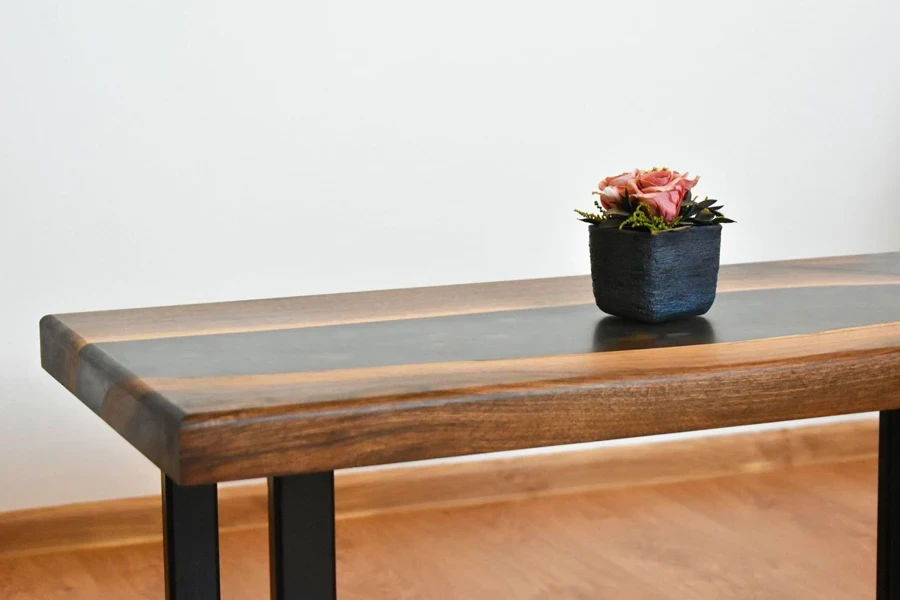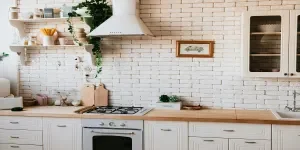Table of Contents
● Introduction
● Market overview
● Key considerations for selecting table tops
● Types of table tops
● Conclusion
Introduction
Table tops significantly influence both the practical and stylistic aspects of kitchen and dining areas. They are more than just surfaces for dining; they set the tone for the room and can turn an ordinary space into an inviting and dynamic environment suitable for daily meals as well as festive gatherings. With a plethora of options available in the market—ranging from luxurious marble to rugged and durable stainless steel—the challenge lies in choosing a material that not only withstands the rigors of daily use but also complements the interior design. For business professionals and online retailers, the decision extends beyond aesthetics; it is also about finding a cost-effective solution that does not compromise on quality. Insights into harmonizing durability, maintenance, and style will help meet the exacting standards of contemporary interior decor.

Market overview
The kitchen and dining furniture market is poised for significant growth, characterized by an evolving consumer emphasis on aesthetics and multifunctional living spaces. According to Statista, this sector is projected to grow at a compound annual growth rate (CAGR) of 4.34% from 2024 to 2028, with the global market volume expected to reach approximately US$102.90 billion by the end of the forecast period. This growth trajectory is fueled by an increasing demand for versatile table tops, which not only enhance home aesthetics but also offer practical utility in everyday life.
Market dynamics show a varied distribution of market shares among different materials and designs, influenced strongly by regional economic factors and consumer preferences; in affluent markets such as the United States and Europe, durable materials like quartz and hardwoods dominate, valued for their longevity and low maintenance. Conversely, in emerging markets, more cost-effective materials such as laminates and veneers are popular, meeting the needs of consumers seeking style without high costs. Additionally, recent trends indicate a growing consumer interest in sustainability and technological integration, with an uptick in demand for eco-friendly materials and furniture that accommodates technology, reshaping expectations and setting new standards in the furniture industry.

Key considerations for selecting table tops
Durability and longevity
When selecting materials for kitchen and dining table tops, it is crucial to prioritize durability and longevity. These surfaces encounter a variety of stresses, including frequent use, accidental impacts, and constant exposure to potential damage. Hardwoods, such as oak and walnut, are traditionally favored for their robust nature, offering excellent resistance to scratches and dents. This makes them particularly suitable for settings that see frequent gatherings and constant use. Metals like stainless steel stand out in kitchen environments where exposure to heat and the likelihood of spills are common. Stainless steel’s resilience to heat and stains makes it an invaluable material in areas where hot dishes and liquids are constants.
Aesthetic compatibility
The selection of material for table tops significantly impacts the aesthetic allure of kitchen and dining spaces. Wood brings a warm, inviting ambiance that can seamlessly integrate into both rustic and modern decors, adapting to a range of interior design trends with its natural hues and grain patterns. In contrast, glass and ceramics offer a sleek, modern look that is ideal for contemporary spaces. These materials have the added benefit of reflecting light, which can make small areas appear larger and more open, contributing to a welcoming atmosphere that enhances the overall dining experience.
Maintenance and hygiene
In kitchen and dining settings, where cleanliness is paramount, selecting materials that are easy to maintain is essential. Laminates are highly favored for their resistance to stains and scratches and can be effortlessly cleaned with a simple wipe down, making them ideal for environments where food is prepared and served. Metals, particularly stainless steel, offer the advantage of being non-porous, which helps prevent bacteria accumulation and facilitates a hygienic surface. These materials are particularly valued in settings where hygiene and easy cleanup are crucial.
Price and value for money
While the aesthetic and functional benefits of natural materials like wood and stone are highly sought after, their cost can be prohibitive. Engineered materials such as laminates offer a cost-effective alternative, mimicking the appearance of more expensive materials without compromising on style. These materials provide considerable durability and longevity, making them an excellent investment for those seeking the balance between cost, functionality, and aesthetic appeal. Opting for these materials allows for the attainment of desired styles and durability without exceeding budgetary constraints.
Environmental impact
As environmental concerns continue to influence consumer choices, the demand for sustainable materials in kitchen and dining spaces is growing. Materials like recycled glass not only help reduce the environmental footprint but also provide unique aesthetic benefits that can enhance interior decor. These sustainable choices support conservation efforts and appeal to eco-conscious consumers looking to minimize their impact on the planet. By choosing materials that are both environmentally friendly and visually appealing, homeowners and designers can create spaces that are not only beautiful but also responsible.

Types of table tops
Hardwood table tops
Hardwoods such as oak and walnut continue to be classic choices for dining areas, valued for their robust nature and enduring appeal. These woods are capable of withstanding years of use, maintaining their aesthetic charm and making them ideal for spaces that host frequent gatherings. Hardwoods offer a versatile look that can effortlessly transition from traditional to contemporary settings. The natural grains and rich colors of these woods not only add warmth to any room but can be enhanced through finishing treatments that boost their resistance to spills and wear, ensuring longevity and a pristine appearance.
Engineered stone table tops
Engineered stones like quartz are favored in modern kitchen and dining areas for their durability and low maintenance. These materials resist scratches and stains and are non-porous, which prevents bacterial growth, making them ideal for kitchen countertops. Quartz combines the visual appeal of natural stone with greater resilience, offering a cost-effective alternative to more delicate rocks. Available in a multitude of colors and patterns, quartz allows for customization to fit any interior design scheme, aligning practicality with aesthetic desires.
Natural stone table tops
Marble and granite, with their unique veining and rich coloring, add a touch of luxury and deliver unparalleled elegance to dining areas. While beautiful, these stones are porous and require regular maintenance to preserve their appearance. The unique patterning of natural stone means no two table tops are exactly alike, offering exclusivity and a dramatic visual appeal that can serve as the centerpiece of a room. Regular sealing is recommended to protect these surfaces from stains and to make cleaning easier.
Metal table tops
Metal table tops, particularly those made from stainless steel, are prized for their sleek industrial appearance and superior functionality. They offer incredible durability and resistance to heat and stains, which is ideal for modern kitchens where practicality is paramount. Metal’s reflective qualities can also enhance the light within a space, contributing to a brighter and more inviting environment. Easy to clean and maintain, metal tops require just a simple wipe to remove any marks, ensuring they remain a focal point in stylish, contemporary settings.
Sustainable materials: eco-friendly table tops
Recycled glass and bio-glass table tops are innovative choices for those looking to combine style with sustainability. These materials are not only visually appealing but also durable and easy to maintain, making them excellent options for both kitchen and dining areas. Opting for table tops made from recycled materials significantly reduces the environmental impact, meeting the needs of eco-conscious consumers. With a variety of colors and finishes available, these sustainable options ensure that choosing environmentally friendly materials does not require a sacrifice in style or quality.
Conclusion
Choosing the right table tops for kitchen and dining areas is crucial, not only for enhancing the functionality of these spaces but also for elevating their aesthetic appeal. The material selection directly impacts the daily use, maintenance, and overall ambiance of the room, making it essential to consider both durability and design in the decision-making process. Whether opting for the warmth and resilience of hardwood, the sleek durability of engineered stone, or the eco-friendly charm of recycled materials, the right table top can transform a functional space into a centerpiece of home life. When selecting table tops, it is important to balance practical needs with aesthetic desires. Consider how the material will stand up to one’s lifestyle demands, such as frequent gatherings or heavy kitchen use, while also reflecting one’s personal style and complementing one’s home decor. Making informed choices about materials and styles will ensure that the kitchen and dining areas are both beautiful and practical, meeting needs and enhancing daily life.




